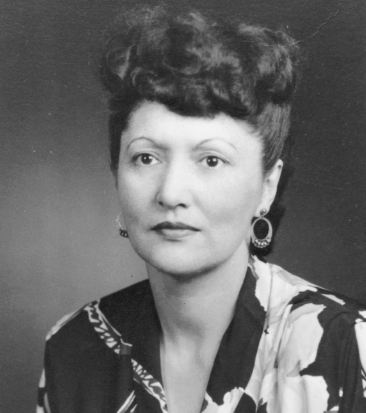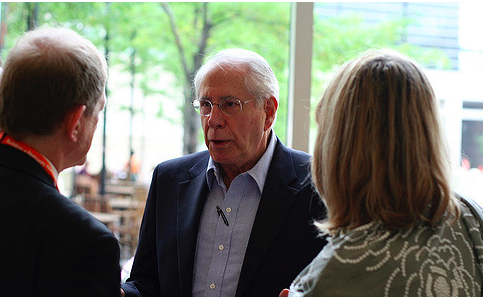PLAYING IN JUNEAU NOW, ANCHORAGE IN MAY, AND IS A ‘SURE BET’
By KEN KOELSCH
GUEST CONTRIBUTOR
“Guys and Dolls” is currently playing at Perseverance Theatre in Douglas (for non-Juneauites, this is over the bridge from Juneau). Much of the script by Jo Swerling and Abe Burrows revolves around gambling. If you are looking for professional entertainment with an exceptional cast, then “Guys and Dolls” is a sure bet.
In another life, while I was teaching English, history and American government at Juneau-Douglas High School, I produced and directed the JDHS Spring Musical. Working in theater provided the opportunity to engage as many students as I could corral into stepping outside of their comfort zones (and my own) to participate in the annual event.

My first production in 1971 was “The Sound of Music” and my last in 1996 was “Joseph and the Amazing Technicolor Dream Coat.” (In this age of full disclosure, I should note that Must Read Alaska’s, Suzanne Downing, appeared as Maria in “The Sound of Music.” Obviously, she did an outstanding job because there has been a spring musical ever since.)
Twenty-five years ago, I chose the 1950 Broadway musical “Guys and Dolls” for the production. Eighty-five high school students were cast as dancers, gangsters, gamblers and Salvation Army band members.
That year, Kelly Richards (current Eagle River State Rep. Kelly Merrick) played a lead role as Adelaide.
I should also come clean and confess that crapshooters in the production carried their dedication to the musical beyond all expectations and actually learned to shoot craps. I discovered that one lunch hour in a back hall at the school. That they were joined by some members of the Hot Box girls and the Mission Band was doubly troubling. Like the good law enforcement officer I was about to become, I broke it up and threatened severe consequences if it happened off-stage again.
Fearing I was responsible for fostering a bad habit, I sought out Juneau’s Catholic Bishop Michael Kenny for counsel. Bishop Kenny always attended the spring musical, sat in the front row, laughed and clapped in the right places, and was the first to his feet to lead a standing ovation. Bishop Kenny’s suggested penance was that perhaps we should again do “Sound of Music” the next year to balance things out.
Over the last 40 years, I have seen many Perseverance Theatre productions. “Guys and Dolls” did not disappoint. The production is, in fact, fantastic. Director Shona Osterhout (wisely) didn’t mess with the book, music, or lyrics. “Guys and Dolls” doesn’t need to be modernized. My only gentle criticism is that if there is a “marker” for 12 sinners, there should be 12 sinners in the Mission!
Perseverance’s 15 actors are well cast, multi-talented and create even, solid characters. This is one of the most athletic group of actors I have seen outside of the gym. The choreography is sharp and quick-paced and demonstrates the required athleticism and rhythm. Between the choreography and the stair-stepping at mach speed, they might want to have an EMT on call just in case.
The four main characters: Sarah Brown (Allison Holtkamp) Nathan Detroit (James Sullivan), Miss Adelaide (Ericka Lee), and Sky Masterson (Enrique Bravo) stand and deliver stellar performances. Nicely-Nicely Johnson (Michael Gamble)’s “Sit Down You’re Rockin’ the Boat” is a personal favorite along with General Cartwright (Stacy Katasse) cutting loose in the song, as is Arvide (Derrick Grimes)’s “More I Cannot Wish You.”
You’ll recognize “Guys and Dolls” songs like “A Bushel and a Peck,” “Luck be a Lady Tonight” and “Sit Down You’re Rockin’ the Boat.’
I give you my marker, you will leave the theater with one of the songs stuck in your head.
Also in the “A” category are the five musicians who not only sound like a 20-piece orchestra but interact hilariously with the actors on stage. I especially enjoyed the choreographed standing up in “Sit Down You’re Rockin’ the Boat.” I’m still not sure how Nicely-Nicely Johnson gets down to the sewer through the main stage. The levels on the set worked well and adding in the audience area at times was genius. The lighting and the costuming were top notch as were the scene changes.
Criticism… I got nothin’.
“Guys and Dolls’ will play in Douglas at Perseverance Theatre until April 13 and then go to Anchorage where it runs from May 3-12. “Guys and Dolls” is an American classic and Perseverance pulls it all together — music, lights, sets, costumes, choreography, dancing, acting, and singing.
Put it on your calendar – miss it and you’re outta luck.
Tickets and other information can be found at this link.
Ken Koelsch is the former mayor of Juneau, and was a teacher at Juneau-Douglas High School for decades. He also served on the Juneau Assembly and was Port Director for U.S. Customs and Border Protection. He and his wife Marian live in Juneau.











